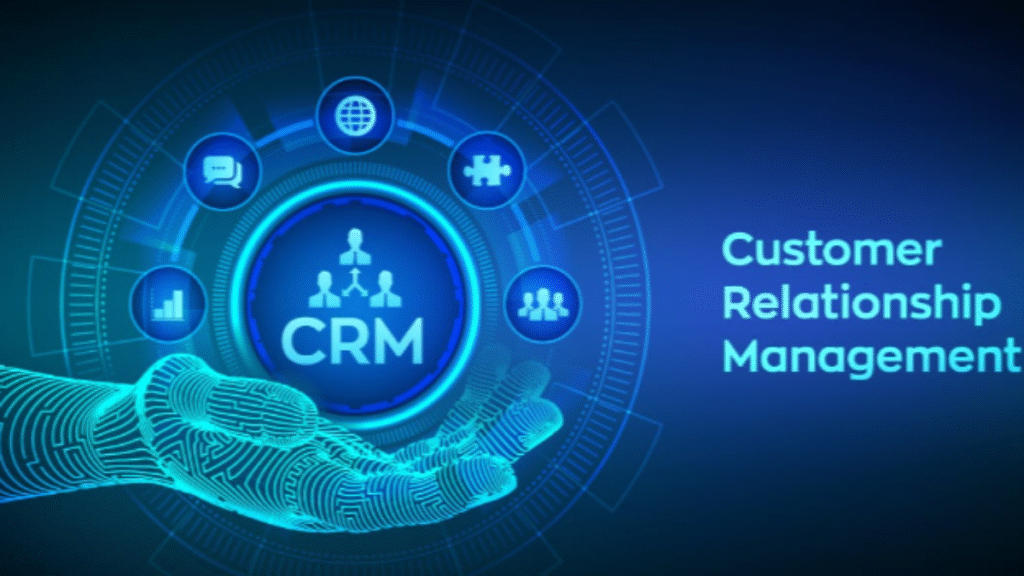In the digital age, every click matters. Whether it’s a potential customer clicking on your website, submitting an inquiry form, or engaging with a social media post — these small actions are the starting points of a journey that could lead to a long-term relationship. But to transform a casual click into a meaningful connection, businesses need more than intuition. They need structure, strategy, and smart tools. That’s where CRM (Customer Relationship Management) systems come in.
A smart CRM system goes beyond storing names and numbers. It helps businesses capture, understand, and strengthen relationships — guiding potential leads through the customer journey and nurturing them into loyal brand advocates.
Let’s explore how smart CRM systems transform clicks into connections and why they are vital in building lasting customer relationships.
Understanding CRM Systems in the Modern Business World
A CRM system is a digital platform that helps businesses manage interactions with current and potential customers. It stores customer data, tracks engagement, automates communication, and creates a unified view of every customer touchpoint.
Modern CRM systems are smart, scalable, and deeply integrated into sales, marketing, and service workflows. They allow businesses to respond faster, personalize communication, and build stronger relationships at every stage of the customer lifecycle.
The Customer Journey: More Than Just a Sale
Before diving into CRM features, it’s important to understand the customer journey — the series of interactions a person has with your brand, from the first click to post-sale engagement. This journey includes:
- Awareness – The customer discovers your brand.
- Consideration – They engage with content or request more info.
- Decision – They make a purchase or commitment.
- Retention – Continued support and communication.
- Loyalty – Repeated business and referrals.
CRM systems serve as a bridge between these stages, ensuring no lead is lost and no relationship is neglected.
How CRM Systems Turn Clicks into Connections
1. Capturing the First Click
Every customer interaction begins with a click — a website visit, a social media like, or a newsletter sign-up. A smart CRM integrates with your digital channels to capture this data instantly, creating a new contact profile.
These initial touchpoints are logged and tracked, helping your team understand where a lead came from and what sparked their interest.
2. Understanding Customer Intent
Once a click is captured, the CRM begins building a behavioral profile. It tracks what pages were visited, how long they stayed, and what content they engaged with. This information helps your sales or marketing team understand the lead’s interests and pain points.
Instead of guessing what a customer wants, you can make data-driven decisions and deliver relevant messages.
3. Personalized Communication and Engagement
Smart CRM systems allow you to segment leads based on interests, behaviors, demographics, and stage in the sales funnel. You can then send personalized emails, offers, or content that resonate with their specific needs.
This level of relevance boosts engagement and makes customers feel seen and understood — the foundation of trust and connection.
4. Automation of Follow-Ups and Tasks
Manually tracking follow-ups can be overwhelming and error-prone. CRM systems automate follow-up emails, reminders, and tasks, ensuring that every lead gets the attention they deserve — on time and with consistency.
Automated nurturing campaigns keep leads warm, even when your team is offline.
5. Supporting the Sales Process
CRMs organize your sales pipeline visually, helping your team track where each lead stands, what actions are needed, and which deals are close to closing. This clarity helps prioritize tasks and close more deals faster.
At the same time, all communications — emails, calls, notes — are logged in one place, keeping the entire team in sync.
6. Providing Exceptional Post-Sale Service
The connection doesn’t end with a sale. A smart CRM supports post-sale communication, tracks service tickets, and logs feedback. This ensures that customers receive the same high-quality attention after the purchase as they did before.
Excellent service leads to higher satisfaction, positive word of mouth, and repeat business.
7. Building Long-Term Loyalty
A smart CRM helps you understand customer purchase behavior, engagement trends, and preferences over time. This insight enables you to:
- Offer tailored loyalty rewards
- Suggest relevant upgrades or add-ons
- Celebrate anniversaries and milestones
- Re-engage dormant customers
All of these strategies deepen the relationship and turn satisfied buyers into loyal fans.
The Benefits of Using a Smart CRM System
Implementing a CRM system brings powerful advantages:
- Stronger, personalized relationships with customers
- Increased conversion rates and customer retention
- More efficient internal communication and task management
- Greater visibility into the customer journey
- Actionable insights through reporting and analytics
- Scalable solutions that grow with your business
In short, it allows you to work smarter — not harder — while building deeper connections at every level.
Best Practices for CRM Success
To make the most of your CRM:
- Keep your database clean and regularly updated
- Train your team on CRM usage and best practices
- Customize the system to match your workflow
- Use automation strategically — don’t overdo it
- Set goals and track KPIs regularly
- Keep the customer at the center of every interaction
Remember, technology is a tool — connection is the goal.
Conclusion
Every click represents potential. But without a system in place to capture, nurture, and grow that potential, it’s easy for leads to get lost or forgotten.
A smart CRM system transforms isolated clicks into meaningful, lasting connections. It helps you understand your customers better, communicate with them more effectively, and serve them in ways that inspire trust and loyalty.
In a market where relationships matter more than ever, CRM systems are not just business tools — they are the backbone of customer-centered success.
FAQs
Q1: What is the primary purpose of a CRM system?
The main purpose of a CRM system is to manage and enhance a company’s interactions with current and potential customers by organizing data, automating communication, and improving relationship-building efforts.
Q2: How does a CRM system help convert leads into customers?
CRM systems track and nurture leads by capturing their behaviors, automating follow-ups, segmenting audiences, and delivering personalized communication, leading to higher conversion rates.
Q3: Can CRM systems help after the sale is made?
Yes. CRM systems support post-sale communication, track support tickets, manage loyalty programs, and help re-engage customers, all of which contribute to long-term retention and loyalty.
Q4: Are CRM systems only for large companies?
Not at all. Small and medium-sized businesses can benefit greatly from CRM systems, especially for organizing data, automating outreach, and scaling customer service.
Q5: How do I know if my business needs a CRM system?
If you’re struggling to manage leads, losing track of customer communications, or looking to improve sales and service efficiency, it’s likely time to invest in a CRM system.



